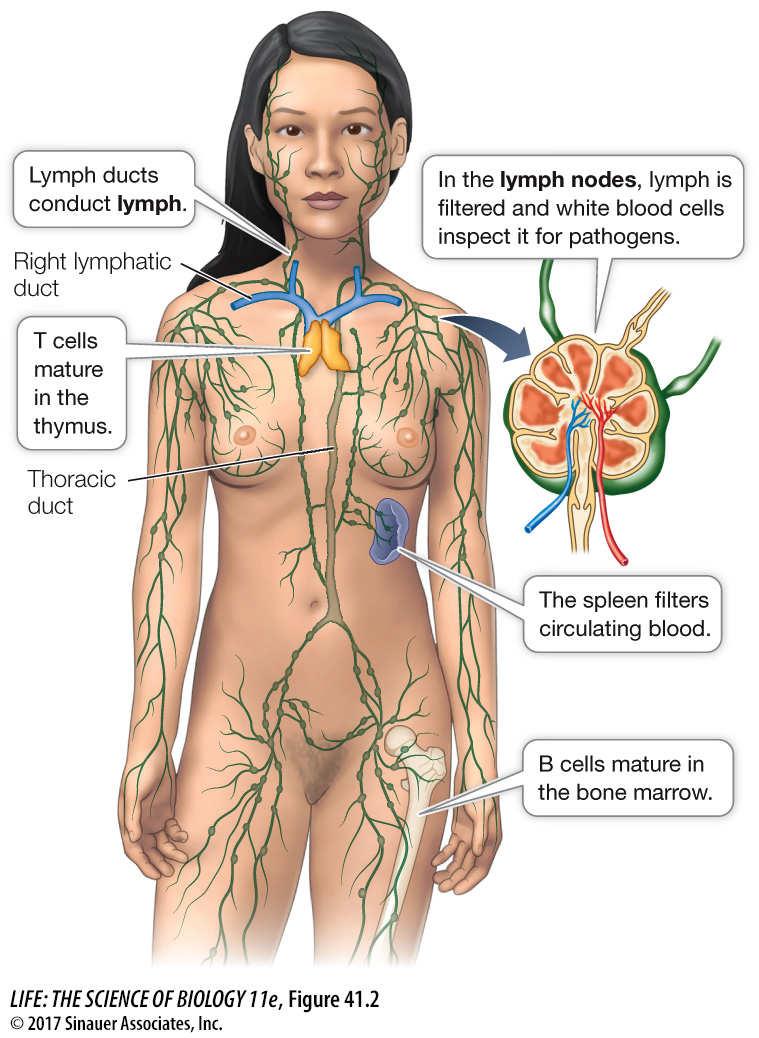Blood and lymph tissues play important roles in defense
The components of the mammalian defense system are dispersed throughout the body and interact with almost all of its other tissues and organs. The lymphoid tissues, which include the thymus, bone marrow, spleen, and lymph nodes, are essential parts of the defense system (Figure 41.2). The blood and lymph are complex systems with nondefensive functions that will be discussed in Chapter 49. They each have central roles in defense as well.

Activity 41.1 The Human Defense System
www.life11e.com/
The blood and lymph both consist of liquids in which cells are suspended:
Blood plasma is a yellowish solution containing ions, small molecule solutes, and soluble proteins. Suspended in the plasma are red blood cells, white blood cells, and platelets (cell fragments essential to blood clotting). Whereas red blood cells are normally confined to the closed circulatory system (the heart, arteries, capillaries, and veins), white blood cells and platelets are also found in the lymph.
Lymph is a fluid that is derived from the blood (but lacking red blood cells) and other tissues and accumulates in intercellular spaces throughout the body. From these spaces, the lymph moves slowly into the vessels of the lymphatic system. Tiny lymph capillaries conduct this fluid to larger ducts that eventually join together, forming two large vessels, the thoracic duct and right lymphatic duct, which join a major vein (the left subclavian vein) near the heart. By this system of vessels, the lymph is eventually returned to the blood and the circulatory system.
At many sites along the lymph vessels are small, roundish structures called lymph nodes, which contain a type of white blood cell called a lymphocyte. As lymph passes through a lymph node, the lymphocytes encounter foreign cells and molecules that have entered the body, and if they are recognized as nonself, an immune response is initiated.